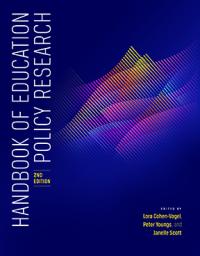Geographic Information Systems in Education
AERA members: Please enter your coupon code in the shopping cart coupon discount field.
Geographic Information Systems in Education
Christopher Lubienski
Ee-Seul Yoon
Click here to view and purchase Handbook of Education Policy Research, 2nd Edition
Title information
Abstract
This chapter offers an overview of the uses and future potential of geospatial analyses in education policy research. Analytical approaches that model spatial location and patterns have proved to be extremely useful in a number of fields in recent decades. However, efforts to use geocoded data to analyze issues in education policy have not kept pace with other fields that have more fully embraced and developed those approaches. The chapter is organized with an introductory section outlining basic concepts, definitions, and possibilities of geographic information systems (GIS), pointing first to their use outside education before being adopted by education researchers. To that end, the authors highlight some of the essentials and advantages of GIS in general and note its utility for multiple types of research. They then turn, in the second section, to GIS applications specifically within education policy research, tracing their origins and the types of uses and questions to which they have been applied; the authors briefly sketch out some of the advantages of geospatial analyses in education policy research. In the third section they discuss the potential applications of GIS in education. In the penultimate section, they highlight some of the limitations and critiques of GIS. They conclude with a discussion of future possibilities for this approach for education policy research. While the chapter is in no way meant to be a how-to guide to GIS research in education, it serves as a survey to help education policy researchers weigh its usefulness for their own work.
Keywords: geo-spatial analysis; mixed methods; equitable access; proximity

